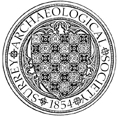Highlands Farm, Leatherhead
Evaluation by J Robertson of SCAU, for Balfour Beatty, in advance of the construction of a bund adjacent to the M25 revealed a couple of post-hole like features which contained no finds and a pit containing burnt bone and flint. A subsequent watching brief on works in the vicinity recorded no further features. (314)


